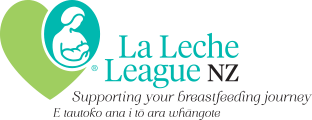The Working Mother
When I found I was pregnant with Sander I knew I had some decisions to
make. What sort of work could I do that would allow me adequate time with
my child and yet provide me with an income relative to my needs? I quickly
decided to attend a teacher training course to teach at secondary school. Deciding on which course to attend was dependant on the institute that would
support me with my newborn. Auckland University allowed me to take my
newborn (five week old) to all classes and lectures. It was, overall, a very
good experience.
I wasn’t comfortable breastfeeding in the class with my peers so I simply left
and sat in an empty room. I was worried that perhaps the stress of the
environment coupled with the impact of being a new mother might affect my
breastfeeding but my worries were never realised. However I did feed Sander
from one breast for the 20 months that I nursed him. He had completely
rejected the left breast from about his second week of life. Fortunately, as I
found out, one is as good as two and surprisingly no one ever noticed a
lopsided look. But who would be looking anyway!
When Sander was six weeks old I was on section (teaching placement). I had
arranged to go to the local school three minutes up the road and I informed
them of my needs regarding breastfeeding. I was able to slip home to feed
Sander and go home during any free periods. During this time my husband
was able to juggle his timetable to look after the baby while I was at school. I
expressed milk for this short period of five weeks. I had had a Caesarean and
I was still feeling fragile so the demands of expressing were an added
difficulty. However the time passed quickly and Sander seemed as keen to fit
in with me as I was to fit in around him. A darling boy. When I returned to
university Sander was able to stay with me through classes.
During this entire experience (which many of my peers thought was an insane
undertaking) breastfeeding Sander and having him share the bed at night with
my husband and I were the elements which provided relaxation and a fluid
sense of well being. These were moments of quiet and respite. I
completed the course and started as a teacher of 13 to 18 year olds the
following year when Sander was eight months old. Once again I feared that
this disruption to our lives would affect our breastfeeding routine. Our routine
did change but it was an adjustment that worked perfectly. I would feed
Sander first thing in the morning and as soon as I got home. Then we followed
the usual routine for evening and through the night. He fed every one and a
half to two hours at night until he was past the age of one year. Again my
friends expressed dismay at my way of doing things but it worked well for us.
It was in keeping with my ideals of parenting, our nursing relationship was
strong and my sense of our bond growing and strengthening was affirmed.
I found my breastfeeding relationship with my son to be the most important
factor in ensuring a smooth transition to work and sense of strong family in the
home in those early days. I was glad that I didn’t need to express for an
extended period and that my son as readily accepted a bottle while I was at
work and my breast when I was at home. I believe this was due to the six
months of full breastfeeding while I was able to take him with me.
In a few weeks I’m expecting my second child and I am anticipating an equally
rewarding breastfeeding relationship. I have six months leave before returning
to work. Once more I have made that all important contact with La Leche
League because support by women who are non judgemental and wish only
to see a mother build the best possible bond with her child is invaluable. My
experience with my La Leche League Leader Alison Stanton was fundamental
in providing me with the information and knowledge that everything is possible
to overcome the hiccups a new mother encounters.
Catherine Hutton, HowickPakuranga
Originally published in Aroha July/August 2003, Volume 5 Issue 4
